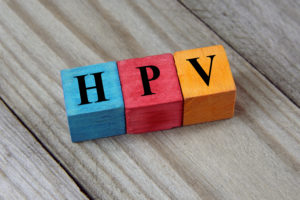 Creating a safe and comfortable sleeping environment for your baby is important for so many reasons. As a new mom, you want a happy well-rested baby, but you also want time to get rest yourself. Additionally, it’s imperative to make sure the sleeping space is safe and guidelines are being followed.
Creating a safe and comfortable sleeping environment for your baby is important for so many reasons. As a new mom, you want a happy well-rested baby, but you also want time to get rest yourself. Additionally, it’s imperative to make sure the sleeping space is safe and guidelines are being followed.
Back is Best
The Center for Disease Control and Prevention (CDC) insists that babies should be placed on their back to sleep at all times (both naps and at night). The baby’s sleep area should be kept in the same room as the parents for at least six month, although 12 months is preferable. Opt for a wearable blanket rather than a normal blanket, but keep an eye on your baby’s temperature by watching for signs that he/she is getting too hot. Heat signs include sweating and hot body areas to the touch. Additionally, be sure a blanket does not cover your baby’s head.
Crib Safety
Several factors contribute to making sure the environment is safe. First, the crib should be safety approved and should contain a flat mattress covered by a fitted sheet. The area around the baby should be completely empty. Soft bedding, blankets, pillows, bumper pads and toys should not be in the baby’s sleeping area.
Create a Bedtime Routine
Once the safe sleep area is ready, the real challenge begins. While some babies will easily sleep through the night, others will not. Many newborns sleep 10-18 hours per day, but the problem is that they don’t know when it’s day or night. Creating a routine is one way to begin to get the baby to realize when it’s bedtime. The idea is to create a set of steps that are followed each and every night.
When planning a bedtime routine, consider what activities make your baby excited and what activities are more calming. Keep more active undertakings for daylight hours and reserve quite games for the evening. Nightly baths are calming and will help your baby wind down. Reading, rocking and music are also wonderful ways to calm baby. This way, your baby has something to look forward to before bed, which may make him or her associated bedtime with this activity that brings them job. In addition, aim to make nighttime conditions consistent, so if your baby wakes up through the night, the same light and sounds are on.
Sources:
https://www.cdc.gov/sids/Parents-Caregivers.htm
https://www.webmd.com/parenting/baby/nighttime#1
More
 February is woman’s heart health awareness month. According to the Mayo Clinic, heart disease remains the number one cause of death for women in the US.
February is woman’s heart health awareness month. According to the Mayo Clinic, heart disease remains the number one cause of death for women in the US.
Even seemingly healthy people who eat well most of the time, exercise occasionally, and feel fine, can be at risk of heart disease. There are many factors unique to woman that make them vulnerable to heart disease or stroke. While the simple fact of female gender increases the risk of heart disease, age, race, and family history are among the other main contributors.
Risk Factors for Heart Disease
Essentially, there are two groups of risk factors, those you can control and those you cannot. The factors you have more control over include smoking, excessive alcohol consumption, your weight and body fat, exercise, body weight, food choices, and Type I diabetes. The factors you may not have as much control over include age, gender, family history, race, familial cholesterol, blood pressure, and history of previous stroke or heart attack.
Know Your Numbers
The American Heart Association recommends that woman keep an eye on the following numbers: Total Cholesterol, HDL (good) Cholesterol, Blood Pressure, Blood Sugar, and Body Mass Index (BMI). While it’s not the same for everyone, typically a normal blood pressure is 120/80, acceptable body mass should be around 25%-30%, and fasting blood sugar should be less than 100 mg/dl. Additionally, cholesterol should be checked and monitored by your doctor.
Control What You Can
Yes, you’ve heard it before, we all have; diet and exercise are paramount to being healthy. While many women “look” and “feel” healthy, it doesn’t mean they are living a heart-healthy life. The best way to eat a heart healthy diet is to fill up on fruits, veggies, whole grains, lean proteins, and low-fat dairy. Opt for foods low in saturated fats, cholesterol, salt, and sugar. One good rule of thumb is to choose 50% fruits and vegetables at every meal. The key is limiting or totally cutting out proceed foods.
Being active is another important piece to this puzzle. The Center for Disease Control and Prevention suggests healthy adults should be active for 150 minutes a week. That breaks down to 2 hours and 30 minutes. So, exercising 30 minutes a day, 5 days per week is ideal. Moderate-intensity exercises, such as brisk walking or bicycling, is recommend.
While it’s no surprise smoking is to be avoided at all costs, monitoring alcohol intake is also suggested. Women should have only one alcoholic drink per day. Red wine is known to have heart healthy benefits and remains a good choice (in moderation) due to its antioxidants.
Looking for more information about heart health? Check out these articles by our group:
Heart Health Month and Reducing Your Risk of Heart Disease
Every Second Counts. Don’t Ignore the Symptoms of a Major Heart Event
February is American Heart Month: What is your heart age?
Sources:
https://www.cdc.gov/features/wearred/index.html
https://www.cdc.gov/heartdisease/healthy_living.htm
https://www.goredforwomen.org/en/know-your-risk/commit-to-better-health
More
 Shingles is a painful skin condition that can lead to more significant health complications or take you out of commission at work and home for up to several weeks. The risk of contracting shingles increases with age. Older adults, in particular, should understand their risk factors and the benefits of protecting themselves with a vaccination.
Shingles is a painful skin condition that can lead to more significant health complications or take you out of commission at work and home for up to several weeks. The risk of contracting shingles increases with age. Older adults, in particular, should understand their risk factors and the benefits of protecting themselves with a vaccination.
Who Should Obtain the Shingles Vaccine?
The Centers for Disease Control and Prevention (CDC) recommend that adults age 60 and older should obtain a shingles vaccine (brand name Zostavax®) whether or not they have had chickenpox. Zostavax mitigates the risk of developing shingles by 51 percent. There is no maximum age at which the CDC recommends adults not obtain the vaccine.
Are There Different Forms of the Vaccine?
To further protect older adults from both shingles and postherpetic neuralgia (PHN), a painful viral infection and chronic condition that can follow a shingles infection causing a mildly itchy to intensely painful rash, the CDC recommends the Shingrix (recombinant zoster) vaccine. Since 2017, the CDC recommends that healthy adults age 50 obtain the Shingrix vaccine as the preferred method of vaccination against both Shingles and PHN.
How is the Shingles Vaccine Administered?
Zostavax is given in a one-dose shot in doctor’s office or pharmacy, and protection lasts about five years. Shingrix is dispensed in two one-dose shots two to six months apart in a doctor’s office or pharmacy.
Should Adults who have Previously Been Infected with Shingles Receive a Vaccine?
Yes. Just like with influenza, even if you have had a previous shingles infection, continue to receive a shingles vaccine if you are 50 years old or older to mitigate your chances of future infection. If you have had a recent shingles diagnosis, as long as the shingles rash has disappeared, you can get vaccinated, as there is no specific recommended wait time in between an infection recovery period and a vaccination.
Who Should Not Get the Shingles Vaccine?
Talk to your doctor if any of the following complication risk factors apply to you:
- A life-threatening or severe allergic reaction to gelatin, the antibiotic neomycin, any other component of the shingles vaccine, or any other severe allergies.
- A weakened immune system due to HIV/AIDS or another autoimmune system condition.
- Treatment with drugs that affect the immune system, such as chemotherapy, radiation, or steroids.
- You are currently pregnant or may become pregnant, as women should not become pregnant until at least four weeks after receiving the shingles vaccine.
- You have a moderate or severe acute illness resulting in a temperature of 101.3° F or higher. Talk to your doctor and wait until you have fully recovered to be vaccinated.
How to Obtain the Shingles Vaccine
If you would like to obtain the shingles vaccine or have any questions as to whether or not vaccination is right for you, talk to your doctor. He or she can discuss your risk factors and the options available to you to reduce your risk of contracting this painful condition.
More
 It’s that feeling of not physically being able to get out of bed. The sensation that you yawn more than you smile. The anxiety when you realize you cannot even conceive of completing even the most mundane chores such as stopping by the post office or making your bed because you are just so overwhelmingly, distractedly exhausted. If feelings of chronic fatigue last for several weeks or months and you don’t believe that a temporary period of overwork or an over complicated schedule is to blame, you may be suffering from a condition called chronic fatigue syndrome (CFS), also referred to as systemic exertion intolerance disease (SEID) or myalgic encephalomyelitis (ME), sometimes abbreviated as ME/CFS.
It’s that feeling of not physically being able to get out of bed. The sensation that you yawn more than you smile. The anxiety when you realize you cannot even conceive of completing even the most mundane chores such as stopping by the post office or making your bed because you are just so overwhelmingly, distractedly exhausted. If feelings of chronic fatigue last for several weeks or months and you don’t believe that a temporary period of overwork or an over complicated schedule is to blame, you may be suffering from a condition called chronic fatigue syndrome (CFS), also referred to as systemic exertion intolerance disease (SEID) or myalgic encephalomyelitis (ME), sometimes abbreviated as ME/CFS.
What is Chronic Fatigue Syndrome?
ME/CFS is a disorder characterized by extreme fatigue that cannot be explained by an underlying medical condition, and that sometimes becomes more severe with mental or physical activity. While accurate estimates are difficult to obtain due to the variety of underlying conditions that can cause symptoms similar to those of ME/CFS, scientists estimate that there may be as many as 17 to 24 million people living with ME/CFS around the world.
What are the Symptoms of Chronic Fatigue Syndrome?
CFS symptoms may include:
- Persistent, overwhelming fatigue.
- Extreme exhaustion that lasts more than 24 hours after physical or mental strain.
- Waking from sleep without feeling satisfied or refreshed.
- Difficulty concentrating.
- Memory loss.
- Headaches.
- Muscle or joint pain.
- A sore throat.
- Enlarged lymph nodes in your armpits or neck.
What Causes Chronic Fatigue Syndrome?
While doctors do not fully understand the cause of this disruptive disorder, some believe it may be caused by a viral infection, while others cite the root cause as psychological stress or other combining factors. Still, others have hypothesized that the cause may be genetic, believing that some individuals are innately hypersensitive to normal amounts of activity and exercise. They believe these individuals may have been born with a predisposition to CFS and then a single impactful episode triggers the onset of symptoms. Such impactful factors may include:
- A viral infection
- Immune system complications
- Hormonal imbalances
Chronic Fatigue Syndrome Diagnosis
Your doctor may need to conduct several tests and exams to provide a definitive diagnosis of CFS while ruling out other underlying medical conditions of which generalized and persistent malaise may be a symptom.
What Treatment Options are Available for Chronic Fatigue Syndrome?
While there is no cure or vaccine to guard against CFS, your doctor will work with you to establish a treatment plan that focuses on symptom mitigation. Such treatment options may include:
- Medications. This treatment option is most applicable to those living with CFS and depression. By treating depression, patients may be better capable of managing their CFS symptoms.
- Cognitive Therapy. Patients with CFS report that regularly speaking with a counselor helps them to cope with the limitations of their condition and learn to take back control by overcoming debilitating symptoms, especially when combined with a low-impact exercise program.
- Graded Exercise. Mild forms of exercise can help mitigate feelings of exhaustion in CFS patients. Be sure to work with a physical therapist who can design a training program and monitor your progress.
How to Get Help
Talk to your doctor if you believe you may be suffering from CFS. If you do not have CFS, another medical condition or illness may be leaving you feeling drained, and your doctor can provide an accurate diagnosis and work with you to create a treatment plan to help you manage your symptoms and become re-engaged in your daily activities.
More
 Genital warts are an important topic because they are the most commonly sexually transmitted disease. Genital warts are caused by the genital human papillomavirus (HPV). According to the Center for Disease Control and Prevention (CDC), roughly 79 million Americans are infected with HPV. Many people infected with HPV will not experience visible warts or any symptoms; however, even without symptoms HPV can lead to higher risk of developing certain types of cancer.
Genital warts are an important topic because they are the most commonly sexually transmitted disease. Genital warts are caused by the genital human papillomavirus (HPV). According to the Center for Disease Control and Prevention (CDC), roughly 79 million Americans are infected with HPV. Many people infected with HPV will not experience visible warts or any symptoms; however, even without symptoms HPV can lead to higher risk of developing certain types of cancer.
Signs and Symptoms
Genital warts appear as bumps or groups of bumps in the genital area. They can be large, small, raised, flat, or clustered. Typically genital warts are diagnosed from a visual exam by a healthcare provider. In most cases, HPV will go away on its own and will not cause health problems; however, some cases can be associated with cervical, vulvar, anal, and penile cancers.
Prevention
The only completely effective way to prevent an HPV infection is abstinence. Additionally, monogamous relationships between two people who have been recently tested and disease-free is also viewed as relatively safe. The virus is spread from skin-to-skin contact, so latex condoms do not offer full protection, though condoms can help reduce the chance of being infected, when used correctly.
The HPV vaccine is also available to everyone ages 9 to 45, although it’s recommended that children ages 11 or 12 get the vaccine before they become sexually active. The HPV vaccine protects against genital warts and/or different types of HPV that can cause cancer.
HPV and Pap Smears
Woman ages 21 to 65 should schedule routine screening for cervical cancer through Pap smears. Woman with the HPV virus will need more frequent Pap smears since the presence is associated with cervical dysplasia and cervical cancer.
Treatment
Treatment varies by case, but can include applying chemicals or creams, in an effort to get the warts to stop growing and go away. Other treatments include freezing, burning with electric current, or removing them with a knife or wife and electricity (LEEP). While these procedures may sound scary, they will remove the warts, thus lowering the symptoms and chances of passing them on.
Talk to your doctor
If you think that you have genital warts or if you are interested in measures to protect yourself from HPV, talk to your doctor. Genital warts are nothing to be embarrassed about. Your OB-GYN is knowledgeable in prevention and treatment and can help put you at ease.
More
 The first few months with a newborn can be stressful for any parent. Between sleep deprivation, frequent feedings, and changings, the entire process may seem exhausting. Many moms will take on the bulk of the duties, which can lead to even more stress. Because new moms may not be sure what to prioritize and what to ask for help with, this list offers ways to take some things off your plate and help your partner become more involved.
The first few months with a newborn can be stressful for any parent. Between sleep deprivation, frequent feedings, and changings, the entire process may seem exhausting. Many moms will take on the bulk of the duties, which can lead to even more stress. Because new moms may not be sure what to prioritize and what to ask for help with, this list offers ways to take some things off your plate and help your partner become more involved.
- Teach, don’t preach. If your partner is a first-time parent, he or she may need some time to become comfortable with a baby. Babies are so small, sometimes new parents are a bit apprehensive about holding, changing or feeding them. Let your partner warm up and discover how to be comfortable with the newborn. Once this familiarity begins to develop, the rest of the care-giving will fall into place.
- Encourage bonding time. Encourage your partner to spend alone time with the baby, which not only gives you a rest, but also lets the baby get used to their other caregiver. This can include rocking the baby in a chair, singing him/her a lullaby, or even wearing the baby in a sling around the house or on errands.
- Realize that it’s ok if your partner doesn’t do things exactly the way you’d do them. Get your partner involved with the basic caregiving tasks of changing, dressing, and bathing. Let your partner go at it alone, even if this means they make mistakes. They need to find their own rhythm, which may differ from yours. Try not to hover or criticize.
- Ask for a break! Many new moms try to do everything themselves. Ask for breaks from feeding with expressed milk or formula. While it may take planning to get milk stored in advance, it can be a tremendously helpful break for the mother. Take a nap, go for a walk or go to the store alone.
- Keep an open line of communication. A new baby in the house is a big change for everyone. Keeping an open line of communication and caring for one another lovingly is key to decreasing stress levels in the household.
As a new mom, it can be easy to want to take the lead and dictate how tasks should be completed. However, it’s important to let your partner be involved and do things their own way. There are many styles and ways to care for a baby, as long as the baby is being safely looked after, let your partner put their own spin on it. They may make mistakes, but do your best to refrain from criticism. Instead of focusing on what you perceive as negative, work to value the help and relief as a positive aspect.
Chouchani, Sayegh and Robinson MD is an OB-GYN practice located in Western New York. We are now accepting new patients! Contact us today to make an appointment.
More
 There’s an aching, radiating pain throughout your body that won’t go away. And you’re tired. So tired that you feel like you could sleep for days. Between the pain and the exhaustion, the idea of dragging yourself out of bed to go to work feels unbearable. Plus, you know that once you get there, things will only get worse. You’ve been forgetting about important work tasks lately, and your co-workers have been whispering about your mood swings, but you’re just so tired that you don’t care.
There’s an aching, radiating pain throughout your body that won’t go away. And you’re tired. So tired that you feel like you could sleep for days. Between the pain and the exhaustion, the idea of dragging yourself out of bed to go to work feels unbearable. Plus, you know that once you get there, things will only get worse. You’ve been forgetting about important work tasks lately, and your co-workers have been whispering about your mood swings, but you’re just so tired that you don’t care.
If this sounds like you, then you may be experiencing fibromyalgia, a painful medical condition that affects approximately three to six percent of Americans, or about 10 million people like you living with constant pain and fatigue.
What is Fibromyalgia?
Fibromyalgia is a medical disorder that causes body-wide musculoskeletal pain, fatigue, memory issues, and mood swings.
Causes
Fibromyalgia is a frustrating condition in which patients feel extreme pain, even though their body is in no way “broken.” While there is much that scientists still don’t understand about this painful condition, researchers believe that fibromyalgia affects the way your brain processes pain signals, resulting in amplified pain sensations. Some researchers theorize that patients with fibromyalgia may have more cells that carry pain signals and fewer cells that slow pain signals down compared to the average person.
Women are more likely to be diagnosed with fibromyalgia than men. Further complicating the pain associated with this disorder, many individuals diagnosed with fibromyalgia also experience tension headaches, temporomandibular joint (TMJ) disorders, irritable bowel syndrome, anxiety, and depression.
Symptoms
For some, symptoms gradually appear over time. For others, symptoms are triggered by a specific event such as surgery, an infection, a physical trauma, or significant psychological stress. Symptoms of fibromyalgia may include:
- Widespread pain that occurs on both sides of the body and above and below the waist that is often described as a constant, dull ache that lasts at least three months.
- Fatigue, characterized by feeling tired upon waking up, regardless of how much sleep is obtained.
- Sleep often disrupted by pain and sometimes complicated by such sleep disorders as restless legs syndrome or sleep apnea.
- Cognitive difficulties commonly referred to as a “fibro fog” that impairs the ability to focus or concentrate on mental tasks.
Treatment
While there is no cure for fibromyalgia, medications such as pain relievers, antidepressants, and anti-seizure medications can help control symptoms. Some patients have also reported improvement in their symptoms with regular exercise, relaxation, and stress-reduction efforts. For some, physical or occupational therapy may help improve strength, flexibility, and stamina to help mitigate pain and fatigue symptoms. Also, due to the emotional toll that living with fibromyalgia can have on many whose day-to-day lives are disrupted by pain, talking with a counselor can help individuals identify coping mechanisms and learn to mitigate symptoms through self-care.
Hope
Talk to your doctor if you think you may be suffering from fibromyalgia. A blood test may be able to confirm a diagnosis. Most importantly, do not accept living with constant pain. Your physician can help you identify the underlying causes of your discomfort and help you build a treatment plan to regain optimal health.
More
 The holiday season can be a wonderful time of the year to enjoy with your family and friends. The list of events often appears endless: work parties, school events, and big family dinners, to name a few. In between all the formal engagements comes shopping, cleaning, cooking, baking, planning, and scheduling. It’s easy to get lost in the details and miss actually enjoying yourself. Here are a few ways to keep calm this December.
The holiday season can be a wonderful time of the year to enjoy with your family and friends. The list of events often appears endless: work parties, school events, and big family dinners, to name a few. In between all the formal engagements comes shopping, cleaning, cooking, baking, planning, and scheduling. It’s easy to get lost in the details and miss actually enjoying yourself. Here are a few ways to keep calm this December.
- Slow down! While it’s easier said than done, especially with the aforementioned list of holiday duties, take time to enjoy yourself and your loved ones. Shift your focus from relying on drawing gratitude from material goods and work on loving the time you get to spend with your family. Look for ways to prioritize memories!
- It’s okay to say, no! With so much pressure to be a million places, buy a ton of gifts, and make endless batches of cookies and brownies, it can easily lead to exhaustion. Instead of agreeing to every holiday request, look for a way to balance the plans. Try to incorporate self-care into the mix. It’s okay to send bought cookies to your child’s school function and it’s okay to say no to events if you are already booked up.
- Find help by working with friends. When you can’t say no, look for ways to combine forces with a friend or another mom in the community. Odds are your friends, especially other moms, will also be stretched thin. Carpooling, baking parties, and holiday meal prep gatherings can help spread out your load.
- Look for ways to include your kiddos in the plans. While this is tricky with small children, kids five and up can certainly lend a hand. By being involved in the cooking, cleaning, and planning of the events, odds are the kids will feel more connected to it. Some ideas include having the kids make holiday cards, wrap presents, set the holiday table settings, or even come up with a holiday variety show act to entertain guests.
- Acknowledge your feelings. Most people feel moments of sadness around the holidays. Whether it’s sadness from a lost loved one, a break up, or even feelings of isolation or loneliness, it’s best to allow yourself to accept the feeling. It’s okay to take some time to be sad or to cry. Feel it and work to move on. If having trouble with the feelings, then reach out for help. Look for local social, religious, or community organizations that can help you deal with the emotion.
- Stick to a plan! One of the best ways to navigate the holidays is to plan your activities in advance. This will help you stay organized and be less stressed overall. While using a calendar to plan activities is a no brainer, also make lists of what needs to be done (cooking/shopping/cleaning) and lists of items you plan to purchase.
- Lastly, take a break! If you find yourself feeling stressed in the moment, try taking a 10- or 15-minute break to clear your mind. Some ideas include a crisp walk around the block to stargaze or look at the neighborhood lights, following a short yoga or guided meditation video online or on your phone, or even simply taking some time to sit in a quiet room with music on. Do your best to enjoy this wonderful time of year.
More
 No couple wants to hear the term “high-risk” associated with their pregnancy. An OBGYN may tell either first-time moms or couples expanding their families that their pregnancy is high-risk for a variety of reasons, but it doesn’t mean that without proper care and close collaboration with your OBGYN that you can’t deliver a full-term, healthy and beautiful baby. Whether you just found out you are pregnant, or you are hoping to become pregnant, it’s critical to understand the factors that may make a pregnancy high-risk.
No couple wants to hear the term “high-risk” associated with their pregnancy. An OBGYN may tell either first-time moms or couples expanding their families that their pregnancy is high-risk for a variety of reasons, but it doesn’t mean that without proper care and close collaboration with your OBGYN that you can’t deliver a full-term, healthy and beautiful baby. Whether you just found out you are pregnant, or you are hoping to become pregnant, it’s critical to understand the factors that may make a pregnancy high-risk.
The term “high-risk” may be used to describe any pregnancy in which there are potential complications that could impact either the mother, or the baby, or both. Factors that could result in a high-risk pregnancy include:
- Preexisting Conditions. If you are managing a chronic condition before you become pregnant, your OBGYN will want to monitor your pregnancy closely. Such conditions include high blood pressure; lung, kidney, or heart problems; diabetes; autoimmune disease; sexually transmitted diseases (STDs) or chronic infections such as human immunodeficiency virus (HIV).
- Maternal Age. Women under 17 or over 35 are at a higher risk of a complication, making any pregnancy high-risk. After age 40, women face a higher risk of miscarriage or giving birth to a child with genetic defects.
- Previous Pregnancy Complications. Women who have experienced complications with a previous pregnancy, or have had a miscarriage, are at a higher risk for future complications.
- Family History. If you have a family history of genetic disorders, your baby could be at higher risk of also being born with an inherited medical condition, such as Down syndrome, cystic fibrosis, or Huntington’s Disease.
- Medical Complications During Pregnancy. Your pregnancy may become high-risk if you develop a medical condition such as preeclampsia (a pregnancy complication characterized by high blood pressure) or gestational diabetes (a condition in which women develop high blood glucose levels during pregnancy).
- Fetal Development Problems. Babies that develop with a minor or major structural problem are considered high-risk. If there is a history of fetal development issues in your family, you may be at a higher risk of experiencing an issue with your baby.
- Multiple Births. The conception of twins, triplets, quadruplets, and more multiples has increased as more couples are utilizing infertility treatments to become pregnant. Carrying multiples increases the risk of premature labor, gestational diabetes, and pregnancy-induced high blood pressure.
- Premature Labor. Even after several months of a seemingly healthy pregnancy, premature labor can put you and your baby in a high-risk scenario. A premature labor is considered one that begins before 37 weeks of pregnancy. Women at a higher risk of premature labor include those with a shortened cervix or who have experienced previous preterm births.
- Placental Previa. A pregnancy condition in which the placenta covers the cervix and can cause bleeding, particularly during contractions. It may require a cesarean section to reduce bleeding risks to mother and baby.
A high-risk pregnancy doesn’t have to mean dire consequences. Whether you know going into your pregnancy that you will be at higher risk, or a pregnancy complication develops unexpectedly, the best thing you can do is work closely with your OBGYN and follow the treatment plan that he or she prescribes to keep both you and your baby safe throughout your pregnancy.
More
 There is something magical about New Year’s Eve. Whether you had a fantastic year filled with new job opportunities, once-in-a-lifetime moments, and personal achievements, or a year filled with disappointments that you’d rather forget, the New Year gives us all the chance to feel renewed, refreshed, and recommitted. January 1 marks a new beginning and the best time to commit to personal improvement.
There is something magical about New Year’s Eve. Whether you had a fantastic year filled with new job opportunities, once-in-a-lifetime moments, and personal achievements, or a year filled with disappointments that you’d rather forget, the New Year gives us all the chance to feel renewed, refreshed, and recommitted. January 1 marks a new beginning and the best time to commit to personal improvement.
Right? Not necessarily.
Think back to last New Year’s Eve. When the ball dropped at midnight, and you tossed your confetti and swayed back and forth with friends and family signing Auld Lang Syne (and reminding yourself yet again to Google what it means), did you genuinely feel different? When the calendar flips over on New Year’s Day, many of us are expecting to feel an impactful change. We want to feel reinvigorated and somehow different. In reality, you’ll wake up the next morning in your same routine and realize that New Year’s Day is just another day.
Then why not make today the first day of a new and an improved you?
Instead of waiting for New Year’s Eve, and its nonexistent power of conversion to help you make impactful changes in your life, start today—start now even. Ask yourself what you want to accomplish next year, and create an actionable plan to achieve your goals. Some of the most common and beneficial New Year’s resolutions from a physical health and comprehensive personal wellness perspective include the resolution to:
- Quit smoking.
- Drink less alcohol.
- Reduce your body weight to a healthy body mass index (BMI).
- Get at least eight hours of sleep every night.
- Spend more time with your family and less time at the office.
- Keep in better contact with out-of-town friends and family (and that doesn’t mean liking more of their social media posts).
- Set aside a higher percentage of your paycheck in your savings account.
- Mitigate the most impactful areas of stress in your life (e.g., long hours at the office, time-consuming clients, toxic relationships, or an over-burdened calendar).
- Volunteer and give back to your community.
- Go back to school full or part-time, or commit to learning a new skill that will advance your career or enrich your life.
- Accomplish a personal achievement that has been on your bucket list for years, like traveling to Japan, running a marathon, or learning Portuguese.
While a new year has significant meaning for your taxes, it doesn’t have to be the only time of the year when you can decide to improve your life. By getting a head start on your New Year’s resolution in December, you’ll be able to achieve your goals that much sooner, and enjoy the benefits of a new you.
More
 Creating a safe and comfortable sleeping environment for your baby is important for so many reasons. As a new mom, you want a happy well-rested baby, but you also want time to get rest yourself. Additionally, it’s imperative to make sure the sleeping space is safe and guidelines are being followed.
Creating a safe and comfortable sleeping environment for your baby is important for so many reasons. As a new mom, you want a happy well-rested baby, but you also want time to get rest yourself. Additionally, it’s imperative to make sure the sleeping space is safe and guidelines are being followed.
 February is
February is  Shingles is a painful skin condition that can lead to more significant health complications or take you out of commission at work and home for up to several weeks. The risk of contracting shingles increases with age. Older adults, in particular, should understand their risk factors and the benefits of protecting themselves with a vaccination.
Shingles is a painful skin condition that can lead to more significant health complications or take you out of commission at work and home for up to several weeks. The risk of contracting shingles increases with age. Older adults, in particular, should understand their risk factors and the benefits of protecting themselves with a vaccination. It’s that feeling of not physically being able to get out of bed. The sensation that you yawn more than you smile. The anxiety when you realize you cannot even conceive of completing even the most mundane chores such as stopping by the post office or making your bed because you are just so overwhelmingly, distractedly exhausted. If feelings of chronic fatigue last for several weeks or months and you don’t believe that a temporary period of overwork or an over complicated schedule is to blame, you may be suffering from a condition called chronic fatigue syndrome (CFS), also referred to as systemic exertion intolerance disease (SEID) or myalgic encephalomyelitis (ME), sometimes abbreviated as ME/CFS.
It’s that feeling of not physically being able to get out of bed. The sensation that you yawn more than you smile. The anxiety when you realize you cannot even conceive of completing even the most mundane chores such as stopping by the post office or making your bed because you are just so overwhelmingly, distractedly exhausted. If feelings of chronic fatigue last for several weeks or months and you don’t believe that a temporary period of overwork or an over complicated schedule is to blame, you may be suffering from a condition called chronic fatigue syndrome (CFS), also referred to as systemic exertion intolerance disease (SEID) or myalgic encephalomyelitis (ME), sometimes abbreviated as ME/CFS. Genital warts are an important topic because they are the most commonly
Genital warts are an important topic because they are the most commonly  The first few months with a newborn can be stressful for any parent. Between sleep deprivation, frequent feedings, and changings, the entire process may seem exhausting. Many moms will take on the bulk of the duties, which can lead to even more stress. Because new moms may not be sure what to prioritize and what to ask for help with, this list offers ways to take some things off your plate and help your partner become more involved.
The first few months with a newborn can be stressful for any parent. Between sleep deprivation, frequent feedings, and changings, the entire process may seem exhausting. Many moms will take on the bulk of the duties, which can lead to even more stress. Because new moms may not be sure what to prioritize and what to ask for help with, this list offers ways to take some things off your plate and help your partner become more involved. There’s an aching, radiating pain throughout your body that won’t go away. And you’re tired. So tired that you feel like you could sleep for days. Between the pain and the exhaustion, the idea of dragging yourself out of bed to go to work feels unbearable. Plus, you know that once you get there, things will only get worse. You’ve been forgetting about important work tasks lately, and your co-workers have been whispering about your mood swings, but you’re just so tired that you don’t care.
There’s an aching, radiating pain throughout your body that won’t go away. And you’re tired. So tired that you feel like you could sleep for days. Between the pain and the exhaustion, the idea of dragging yourself out of bed to go to work feels unbearable. Plus, you know that once you get there, things will only get worse. You’ve been forgetting about important work tasks lately, and your co-workers have been whispering about your mood swings, but you’re just so tired that you don’t care. The holiday season can be a wonderful time of the year to enjoy with your family and friends. The list of events often appears endless: work parties, school events, and big family dinners, to name a few. In between all the formal engagements comes shopping, cleaning, cooking, baking, planning, and scheduling. It’s easy to get lost in the details and miss actually enjoying yourself. Here are a few ways to keep calm this December.
The holiday season can be a wonderful time of the year to enjoy with your family and friends. The list of events often appears endless: work parties, school events, and big family dinners, to name a few. In between all the formal engagements comes shopping, cleaning, cooking, baking, planning, and scheduling. It’s easy to get lost in the details and miss actually enjoying yourself. Here are a few ways to keep calm this December. No couple wants to hear the term “high-risk” associated with their pregnancy. An OBGYN may tell either first-time moms or couples expanding their families that their pregnancy is high-risk for a variety of reasons, but it doesn’t mean that without proper care and close collaboration with your OBGYN that you can’t deliver a full-term, healthy and beautiful baby. Whether you just found out you are pregnant, or you are hoping to become pregnant, it’s critical to understand the factors that may make a pregnancy high-risk.
No couple wants to hear the term “high-risk” associated with their pregnancy. An OBGYN may tell either first-time moms or couples expanding their families that their pregnancy is high-risk for a variety of reasons, but it doesn’t mean that without proper care and close collaboration with your OBGYN that you can’t deliver a full-term, healthy and beautiful baby. Whether you just found out you are pregnant, or you are hoping to become pregnant, it’s critical to understand the factors that may make a pregnancy high-risk. There is something magical about New Year’s Eve. Whether you had a fantastic year filled with new job opportunities, once-in-a-lifetime moments, and personal achievements, or a year filled with disappointments that you’d rather forget, the New Year gives us all the chance to feel renewed, refreshed, and recommitted. January 1 marks a new beginning and the best time to commit to personal improvement.
There is something magical about New Year’s Eve. Whether you had a fantastic year filled with new job opportunities, once-in-a-lifetime moments, and personal achievements, or a year filled with disappointments that you’d rather forget, the New Year gives us all the chance to feel renewed, refreshed, and recommitted. January 1 marks a new beginning and the best time to commit to personal improvement.